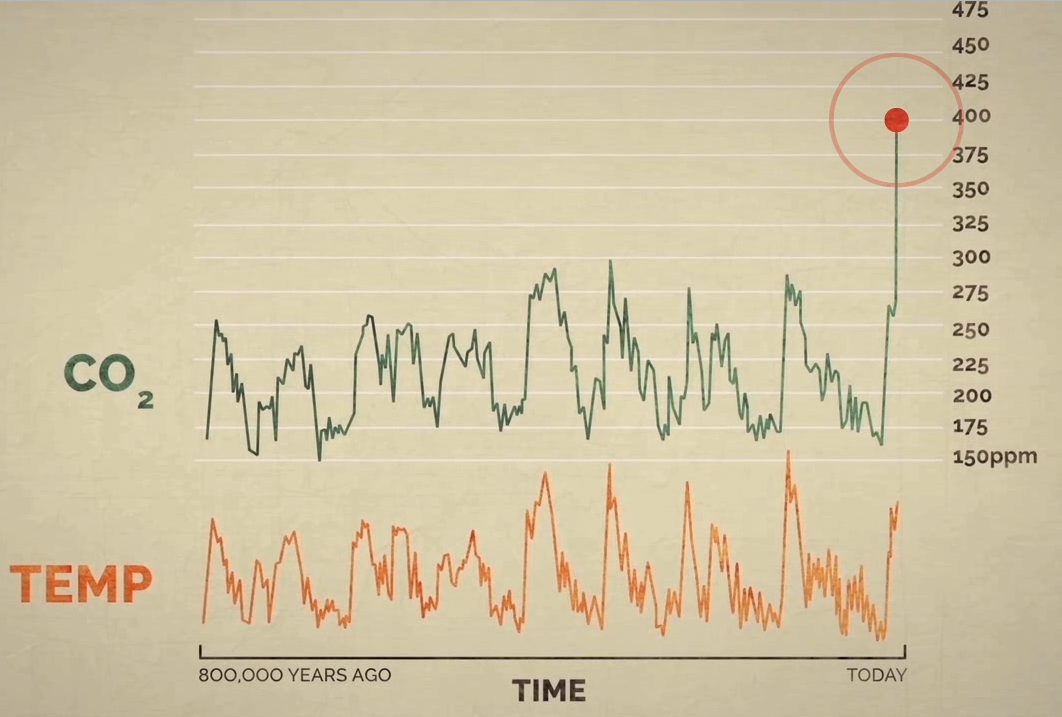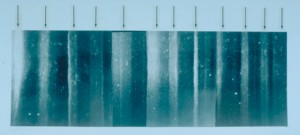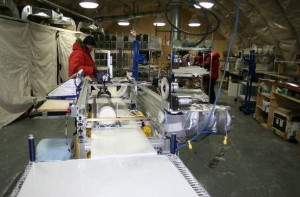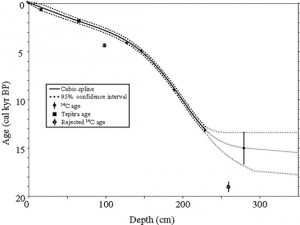ACE Report: How to Date an Ice Core
Open Google Doc of How to Date an Ice Core
By Rebecca Anderson, ACE Director of Education
If you’ve seen Our Climate Our Future, you should be familiar with this graph by now.

Time is measured by hundreds of thousands of years BP (before present) along the bottom, with 0 being roughly today (or whenever they drilled the ice core). But how do scientists know how old this ice is? The underlying principle here is that the ice sheet forms as snow piles up year after year for thousands of years. The weight of the snow above presses down and turns the snow into ice, so you end up with layers of ice stacked up on top of each other with the oldest ice at the bottom up to snow that’s falling right now on the top.
There are three main ways to figure out how old this ice actually is:
1. Some ice has visible layers in it that correspond to years. This is most often the case in ice from Greenland. In this case, you literally just count back the layers into the past!

2. Even if you can’t see layers in the ice with your eye, there are yearly changes in other qualities of the ice that you can use to count back in time. The amount of dust and sea salt that gets carried in from the coast to the ice sheet is greater during the summer than in winter, because the open ocean is a lot closer in summer without all that sea ice surrounding the ice sheet.

3. Volcanoes provide really handy markers that help to keep the layer or wiggle counting honest and accurate along the way. Really big volcanic eruptions will deposit a layer of ash onto the ice sheet along with the snow. You can see some of these layers with the naked eye, but many of them only show up when you’re testing the chemistry of the ice.
The chemistry of the volcanic ash can be matched with the volcano it came from (It has a characteristic “signature” or “fingerprint.”) and that eruption can be dated. (This is done using the radioactive decay of elements in the lava or ash from the volcano.)
Using all three of these techniques, scientists then come up with an “age model” where they fit the dates they know and the depth of the ice to the best curve they can and use the formula for that curve to predict the age of the ice at any given depth. And then… ta-da! You’ve dated an ice core.
I couldn’t find a good graph of an ice core age model, but here’s one from a lake sediment core in Alaska to give you an idea of how this looks. Depth is on the X axis and age is on the Y axis.

Next up — how to get temperature from an ice core…
How to Date an Ice Core
Student Worksheet
Name:
For context, ice cores drilled from ice sheets in Antarctica and Greenland are an excellent way to learn about past climate, including past temperature and CO2 levels in the atmosphere. But being able to place this data into context back through time is critical to understanding what it means.
1. In an ice sheet, where is the oldest ice located? Where is the youngest ice? How does the ice sheet form?
2. What’s the simplest way to get the age of the ice?
3. What’s the second way to get the age of the ice?
4. How can a volcano that erupted far away from the ice sheet help to get the age of the ice?
5. How do scientists use these individual data points in time to get an age for any point in the ice core? What is this called?
6. BONUS: Why isn’t each yearly layer in the ice core the same thickness as you get deeper down in the ice sheet?
